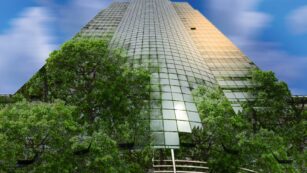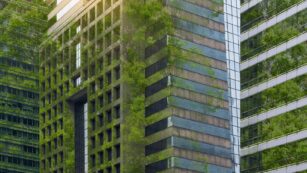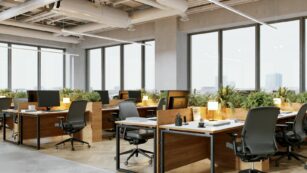In the face of escalating environmental concerns, green buildings stand out as beacons of sustainability and innovation. These structures, designed with eco-friendliness at their core, not only minimize harm to the environment but also offer substantial benefits to their occupants. From reduced energy consumption to improved indoor air quality, the advantages of green buildings extend beyond mere environmental preservation.
Green Building Benefits
Green buildings stand out for their significant environmental, economic, and social benefits. They feature sustainable construction practices and technologies that continue to set trends in the construction industry.
Economic Benefits Explored
Exploring the economic benefits unveils how green buildings make financial sense alongside their environmental advantages. These structures not only contribute to sustainability but also deliver tangible financial gains.
Cost Savings in the Long Run and Increased Property Value
 Green buildings decrease utility bills by integrating energy-efficient systems and renewable energy sources. These buildings often feature solar panels, energy-efficient windows, and advanced insulation techniques, which reduce the need for heating and cooling. This leads to lower energy consumption, with green buildings saving about 30% annually on energy costs compared to conventional buildings.
Green buildings decrease utility bills by integrating energy-efficient systems and renewable energy sources. These buildings often feature solar panels, energy-efficient windows, and advanced insulation techniques, which reduce the need for heating and cooling. This leads to lower energy consumption, with green buildings saving about 30% annually on energy costs compared to conventional buildings.
Properties with green certification often command higher market values. Buyers are increasingly aware of the benefits associated with green buildings, including reduced utility costs and better indoor environmental quality. This awareness translates into a willingness to pay a premium for such properties.
Environmental Impact of Green Buildings
Reduction in Greenhouse Gas Emissions and Enhanced Resource Efficiency
 Green buildings play a critical role in reducing greenhouse gas emissions. They typically consume less energy than conventional buildings, leading to lower emissions of carbon dioxide and other pollutants. For example, energy-efficient appliances, solar panels, and better insulation in green buildings minimize the need for fossil fuel-based energy sources.
Green buildings play a critical role in reducing greenhouse gas emissions. They typically consume less energy than conventional buildings, leading to lower emissions of carbon dioxide and other pollutants. For example, energy-efficient appliances, solar panels, and better insulation in green buildings minimize the need for fossil fuel-based energy sources.
Green buildings enhance resource efficiency by using less water, energy, and raw materials compared to standard buildings. They incorporate water-saving fixtures and rainwater harvesting systems, drastically reducing water usage. Energy-efficient designs and renewable energy sources are integral, cutting down on energy demand and promoting sustainability.
Health and Social Benefits
 Green buildings enhance the well-being of their occupants by providing improved air quality and natural lighting. Studies have shown that the air inside green buildings contains fewer pollutants and contaminants due to the use of low-emitting materials and advanced ventilation systems. These factors contribute to a lower incidence of respiratory diseases, allergies, and other health issues. Natural lighting, achieved through strategic placement of windows and the use of reflective surfaces, ensures that occupants receive ample daylight, which has been linked to better mood, enhanced mental health, and increased productivity.
Green buildings enhance the well-being of their occupants by providing improved air quality and natural lighting. Studies have shown that the air inside green buildings contains fewer pollutants and contaminants due to the use of low-emitting materials and advanced ventilation systems. These factors contribute to a lower incidence of respiratory diseases, allergies, and other health issues. Natural lighting, achieved through strategic placement of windows and the use of reflective surfaces, ensures that occupants receive ample daylight, which has been linked to better mood, enhanced mental health, and increased productivity.
Beyond individual health improvements, green buildings also have considerable social benefits. They often incorporate design elements that encourage social interaction, such as communal spaces, gardens, and rooftops. These spaces help to establish a sense of community among residents or employees, fostering social ties and improving overall social well-being. Additionally, green buildings are frequently located in walkable areas that promote active lifestyles and reduce dependency on vehicles, further contributing to community health and reducing emissions from transportation.
Green Building Certification and Standards
 Green building certifications set the bar high for sustainable construction and design. They serve as a clear indicator to property buyers and tenants that a building meets stringent environmental and health standards. By adhering to recognized green standards property owners ensure their buildings are not only environmentally friendly but also economically and socially beneficial.
Green building certifications set the bar high for sustainable construction and design. They serve as a clear indicator to property buyers and tenants that a building meets stringent environmental and health standards. By adhering to recognized green standards property owners ensure their buildings are not only environmentally friendly but also economically and socially beneficial.
The push towards sustainable construction is reshaping the real estate market. Property owners who invest in green building certifications are seeing their properties stand out in the competitive market attracting more buyers and renters who value sustainability. This trend underscores the growing importance of green buildings in today’s world where environmental consciousness drives consumer choices and investment decisions.
Adopting green building practices isn’t just about compliance or marketability—it’s a commitment to future generations. These buildings are cornerstones in the foundation of a sustainable future paving the way for a healthier planet and a thriving society.

